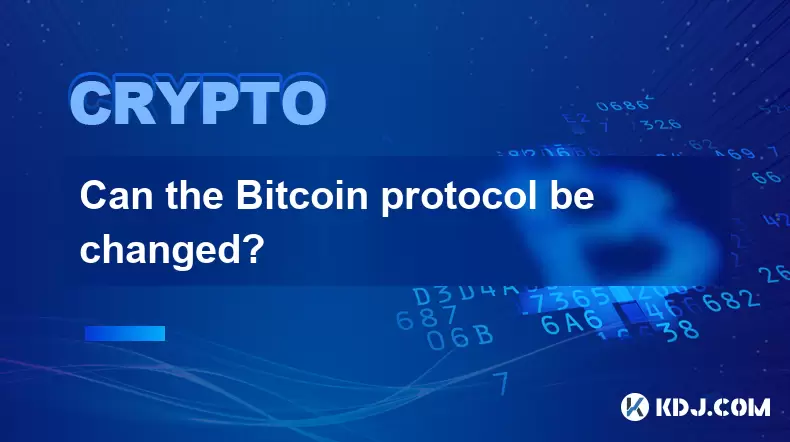-
 bitcoin
bitcoin $118548.520763 USD
3.67% -
 ethereum
ethereum $4352.564943 USD
4.79% -
 xrp
xrp $2.964058 USD
4.22% -
 tether
tether $1.000565 USD
0.05% -
 bnb
bnb $1028.372955 USD
1.46% -
 solana
solana $221.373507 USD
6.00% -
 usd-coin
usd-coin $0.999933 USD
0.02% -
 dogecoin
dogecoin $0.248633 USD
6.85% -
 tron
tron $0.341444 USD
2.38% -
 cardano
cardano $0.852946 USD
5.82% -
 hyperliquid
hyperliquid $47.869306 USD
6.15% -
 chainlink
chainlink $22.561476 USD
6.01% -
 ethena-usde
ethena-usde $1.001258 USD
0.05% -
 avalanche
avalanche $30.660000 USD
2.06% -
 stellar
stellar $0.400917 USD
9.76%
How to track my Bitcoin portfolio?
Tracking your Bitcoin portfolio helps monitor value, performance, and transactions across wallets and exchanges, aiding informed investment decisions.
Jul 07, 2025 at 06:56 am

What is Bitcoin Portfolio Tracking?
Tracking your Bitcoin portfolio involves monitoring the value, performance, and transactions of your Bitcoin holdings across various wallets and exchanges. This process allows investors to stay informed about their asset allocation, gains or losses, and overall market exposure. As Bitcoin is a decentralized digital currency, tracking requires tools that can aggregate data from multiple sources where your BTC might reside. Whether you're holding small amounts or large investments, understanding how your portfolio evolves over time is crucial for making informed decisions.
Why Should You Track Your Bitcoin Portfolio?
The importance of tracking your Bitcoin portfolio lies in its ability to provide real-time insights into your financial health within the cryptocurrency space. By using dedicated tracking platforms, you gain visibility into:
- The current value of your BTC holdings
- Historical performance trends
- Transaction history across different wallets and exchanges
- Market volatility impact on your investment
This level of oversight enables better decision-making, especially when considering buying, selling, or holding strategies. It also helps in tax reporting, as many jurisdictions require accurate records of crypto transactions.
Choosing the Right Bitcoin Portfolio Tracker
There are several portfolio tracking apps available that cater specifically to Bitcoin and other cryptocurrencies. When selecting one, consider the following features:
- Multi-wallet and exchange support: Ensure the app connects with all the platforms where you hold BTC.
- Real-time updates: Accurate and timely price tracking is essential for assessing your portfolio’s value.
- Security: Choose apps that use secure APIs and do not store private keys.
- Custom alerts: Notifications for price changes or significant movements help you react quickly.
- Exportable reports: Useful for record keeping and tax purposes.
Popular options include CoinMarketCap, CoinGecko, Blockchair, and Delta, each offering unique tools tailored to individual investor needs.
Setting Up Your Bitcoin Tracking Account
To begin tracking your Bitcoin portfolio, follow these steps:
- Choose a tracking platform: Research and select a reliable app or website.
- Create an account: Most services require basic registration details.
- Connect your wallets and exchanges: Use API keys or import wallet addresses to sync your data.
- Verify balances: Ensure all your BTC holdings appear correctly.
- Set up notifications: Customize price alerts and transaction updates.
By integrating all your Bitcoin sources into one dashboard, you achieve a unified view of your investment status at any given moment.
Monitoring Transactions and Balances
Once your accounts are linked, it's important to actively monitor your Bitcoin portfolio. Every transaction—whether sending, receiving, or exchanging—should be reflected in your tracking app. Regular checks help detect discrepancies or unauthorized activity early. Key points to observe include:
- Transaction confirmations: Confirm that incoming and outgoing transfers have sufficient blockchain confirmations.
- Balance fluctuations: Understand how market price affects your total BTC value.
- Fee deductions: Be aware of network fees associated with each transaction.
- Wallet activity logs: Review timestamps and transaction IDs for accuracy.
These practices ensure transparency and help maintain control over your Bitcoin assets.
Managing Multiple Bitcoin Wallets
If you hold BTC across several wallets—such as software wallets, hardware wallets, and exchange accounts—it's vital to track them collectively. Here’s how:
- Import public addresses: Most tracking tools allow manual entry of wallet addresses without requiring private key access.
- Label each wallet: Assign names like 'Cold Storage,' 'Trading,' or 'Savings' for clarity.
- Use hierarchical grouping: Some apps let you organize wallets under categories for easier management.
- Review wallet-specific analytics: Assess performance per wallet to understand usage patterns.
Managing multiple wallets ensures you don’t lose sight of any portion of your Bitcoin holdings.
Frequently Asked Questions (FAQ)
Q1: Can I track my Bitcoin portfolio without linking my wallet?Yes, you can manually input your wallet addresses into most tracking platforms. This method does not expose your private keys but still allows balance and transaction monitoring via public blockchain data.
Q2: Is it safe to connect my exchange accounts to a tracking app?Most reputable tracking apps use read-only API keys that cannot initiate trades or withdrawals. Always review the permissions granted and avoid sharing sensitive credentials directly.
Q3: How often should I check my Bitcoin portfolio?While daily checks offer real-time awareness, reviewing your portfolio weekly or monthly may suffice depending on your investment strategy and market conditions.
Q4: Do tracking apps support other cryptocurrencies besides Bitcoin?Yes, nearly all portfolio trackers support a wide range of cryptocurrencies. You can manage your entire crypto portfolio, including Ethereum, Litecoin, and more, within the same interface.
Disclaimer:info@kdj.com
The information provided is not trading advice. kdj.com does not assume any responsibility for any investments made based on the information provided in this article. Cryptocurrencies are highly volatile and it is highly recommended that you invest with caution after thorough research!
If you believe that the content used on this website infringes your copyright, please contact us immediately (info@kdj.com) and we will delete it promptly.
- BlockDAG, DOGE, HYPE Sponsorship: Crypto Trends Shaping 2025
- 2025-10-01 00:25:13
- Deutsche Börse and Circle: A StableCoin Adoption Powerhouse in Europe
- 2025-10-01 00:25:13
- BlockDAG's Presale Buzz: Is It the Crypto to Watch in October 2025?
- 2025-10-01 00:30:13
- Bitcoin, Crypto, and IQ: When Genius Meets Digital Gold?
- 2025-10-01 00:30:13
- Stablecoins, American Innovation, and Wallet Tokens: The Next Frontier
- 2025-10-01 00:35:12
- NBU, Coins, and Crypto in Ukraine: A New Yorker's Take
- 2025-10-01 00:45:14
Related knowledge

Why is Bitcoin considered a revolutionary technology?
Aug 12,2025 at 08:29pm
Decentralization and the Elimination of Central AuthoritiesThe core innovation behind Bitcoin lies in its decentralized architecture, which fundamenta...

Why is Bitcoin considered a revolutionary technology?
Aug 10,2025 at 07:42pm
Decentralized Architecture and Trustless TransactionsBitcoin is considered revolutionary because it introduced a decentralized architecture that opera...

What are the key features of Bitcoin?
Aug 10,2025 at 02:50am
Decentralization and Peer-to-Peer NetworkOne of the most defining characteristics of Bitcoin is its decentralized nature. Unlike traditional financial...

Can the Bitcoin protocol be changed?
Aug 07,2025 at 01:16pm
Understanding the Bitcoin ProtocolThe Bitcoin protocol is the foundational set of rules that govern how the Bitcoin network operates. It defines every...

Can the Bitcoin protocol be changed?
Aug 11,2025 at 01:01am
Understanding the Bitcoin Protocol StructureThe Bitcoin protocol is the foundational set of rules that govern how the Bitcoin network operates. These ...

What happens to Bitcoin transactions once they are confirmed?
Aug 09,2025 at 05:22am
Understanding Bitcoin Transaction ConfirmationWhen a Bitcoin transaction is initiated, it is broadcast to the network and placed in a pool of unconfir...

Why is Bitcoin considered a revolutionary technology?
Aug 12,2025 at 08:29pm
Decentralization and the Elimination of Central AuthoritiesThe core innovation behind Bitcoin lies in its decentralized architecture, which fundamenta...

Why is Bitcoin considered a revolutionary technology?
Aug 10,2025 at 07:42pm
Decentralized Architecture and Trustless TransactionsBitcoin is considered revolutionary because it introduced a decentralized architecture that opera...

What are the key features of Bitcoin?
Aug 10,2025 at 02:50am
Decentralization and Peer-to-Peer NetworkOne of the most defining characteristics of Bitcoin is its decentralized nature. Unlike traditional financial...

Can the Bitcoin protocol be changed?
Aug 07,2025 at 01:16pm
Understanding the Bitcoin ProtocolThe Bitcoin protocol is the foundational set of rules that govern how the Bitcoin network operates. It defines every...

Can the Bitcoin protocol be changed?
Aug 11,2025 at 01:01am
Understanding the Bitcoin Protocol StructureThe Bitcoin protocol is the foundational set of rules that govern how the Bitcoin network operates. These ...

What happens to Bitcoin transactions once they are confirmed?
Aug 09,2025 at 05:22am
Understanding Bitcoin Transaction ConfirmationWhen a Bitcoin transaction is initiated, it is broadcast to the network and placed in a pool of unconfir...
See all articles










































































